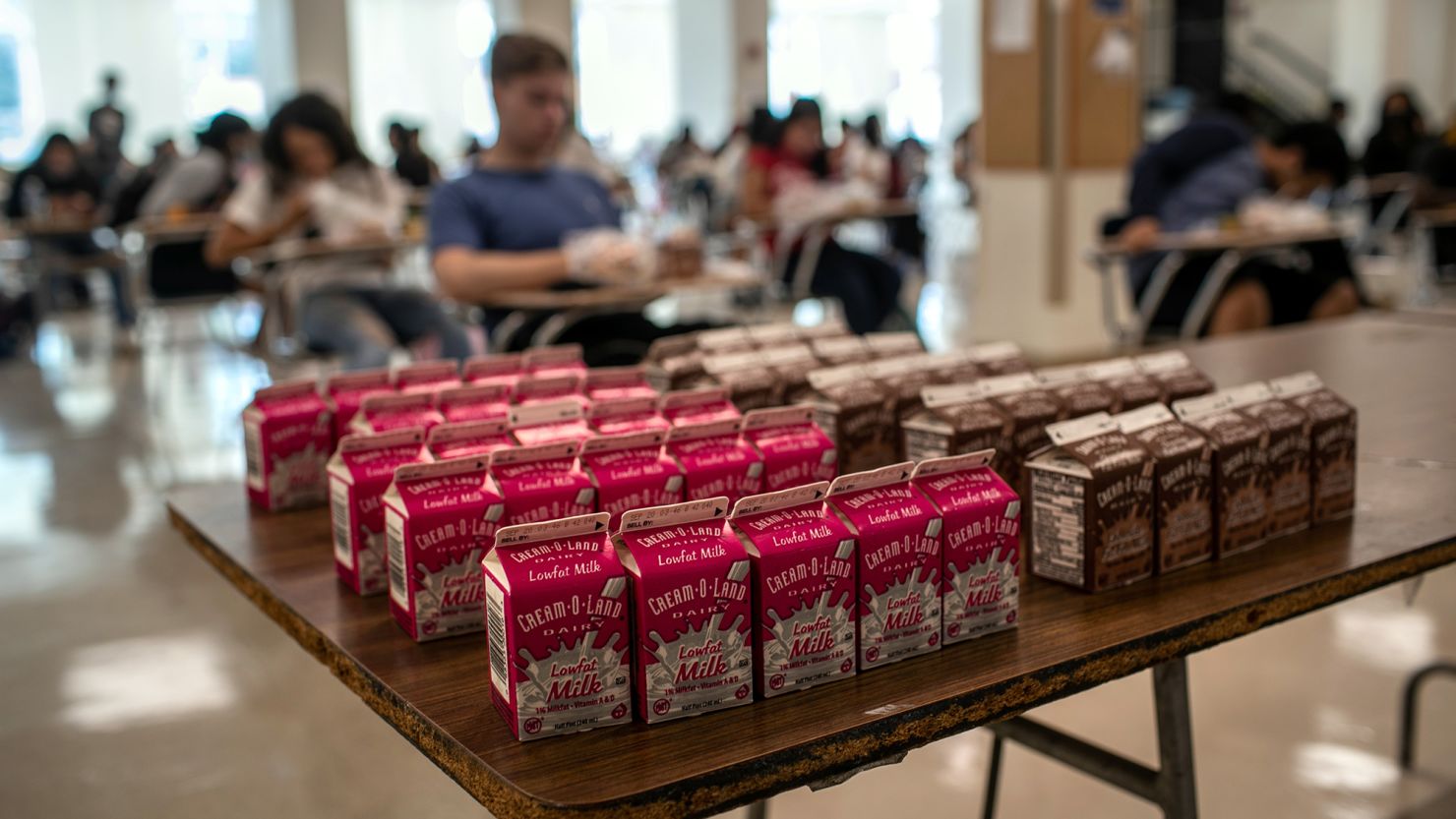Julia Galliker learned out of the blue that there was a problem with milk carton supplies.
The milk that goes in the cartons was perfectly fine. The problem is with the packaging its sold in: Namely, there’s suddenly not enough of it. For Galliker, executive vice president of the Pennsylvania-based Galliker Dairy Company, that’s a big problem.
The Pennsylvania-based company, which sells milk along with other dairy products and beverages like juice and iced tea, processes 1.3 million small milk cartons each week, Galliker said. The little milk cartons go not only to schools, but to other institutions like nursing homes and correctional facilities. It has about 500 institutional customers buying these items.
The news from her supplier, which she did not name, left Galliker in a bind. “We had no indication that this was coming,” she said, adding that she’s been told to expect the problem to persist through the end of the year. “There’s not a lot of clarity,” she said. “It’s really day by day.”
Galliker isn’t the only one struggling. There are just a few US-based suppliers of these types of cartons, so milk processors have little recourse when things go awry. The carton shortage has been affecting these processors, and schools in turn, across the country in recent weeks. Everyone is scrambling to figure out a workaround. Galliker has set up a School Milk Hotline to try to help customers left without their typical supply.
What’s going on
The Department of Agriculture sounded the alarm in late October, laying out the situation in a memo posted to its website.
“USDA’s Food and Nutrition Service (FNS) is aware that schools in multiple states are experiencing milk supply chain challenges related to packaging issues,” the Department of Agriculture said on October 25.
The memo didn’t offer much more information about the nature of the issues.
In a statement posted to its website, Cream-O-Land, which sells milk to schools, said that “Pactiv Evergreen, which supplies cartons to Cream-O-Land Dairies and other milk processing companies across the United States, is experiencing major production issues. These production issues have depleted most of our half pint (8 oz) and 4 oz carton supply.” The company added that “Pactiv Evergreen has notified us that it will supply less than 50% of our weekly needs of cartons to meet customer demand in the eastern United States,” and said it let the USDA and the Food and Drug Administration know about the problem in late September. “Starting immediately and continuing over the next few months, you may not receive the milk that was requested on your order,” Cream-O-Land added.
Pactiv Evergreen, which makes fresh beverage cartons, told CNN in a statement that it had miscalculated demand, without offering more details on what went wrong.
“Like other milk carton producers across the industry, Pactiv Evergreen continues to face significantly higher than projected demand,” a company spokesperson said in a statement. “We have and will continue to take actions to improve operational efficiencies to maximize near-term production and meet the increased demand.”
The disruption doesn’t mean there’s not enough milk to go around. But it does introduce distribution problems.
Early in the Covid-19 pandemic, when many restaurants and schools closed their doors, there was a massive mismatch between where milk was wanted and how it was packaged. Dairy farmers struggled to immediately shift to supplying supermarkets instead of foodservice providers, and as a result many had to dump out their milk supplies.
Industry experts aren’t expecting the same situation here, even though the shortage is upending certain operations.
Typically, milk sold to institutions like schools makes up about 7% to 7.5% of all fluid milk sold in the US for drinking — as opposed to condensed milk or milk used for ingredients in dairy products — said Matt Herrick, senior vice president of public affairs and communications at the International Dairy Foods Association, which represents dairy processors. “It is an important source,” of milk sales, he said.
“However, we don’t have the same concerns here,” as the industry did early in the pandemic, when “the bottom fell out of major markets overnight,” he said.
But “this is another situation where schools need to think on their feet and react quickly,” he said.
USDA relaxes milk requirements
Generally, the Department of Agriculture requires public schools to offer fat free, 1% or flavored milk at breakfast and lunch. But because of the disruption, the USDA has relaxed some of these requirements, it noted in the October memo.
According to the USDA, schools in states with shortages can serve other types of milk or no milk at all. “Program operators are expected to meet the fluid milk requirements to the greatest extent possible,” but “supply chain disruptions, including disruptions that limit milk variety or affect serving size, would be considered a temporary emergency condition for purposes of this flexibility.”
At the Springville-Griffith Institute Central School District in Springville, New York, the cafeteria is planning to serve milk and chocolate milk in four- and eight-ounce cups, along with juice and water options.
In Everett, Washington, public schools warned that the disruption could last several months.
“Unfortunately, we cannot avoid the reality that our school district will run out of half-pint cartons of milk to serve,” the public school system said in a November 2 statement posted to its website. “We are actively working with our other suppliers to develop a plan that minimizes the impact on our students.” That includes transitioning to shelf-stable milk at breakfast. At lunch, juice and eight-ounce bottles of water will be offered as alternatives.
Switching containers isn’t easy
To offer an alternative solution to customers, Galliker has been switching to bulk packaging that can be poured or dispensed. But that option places an extra burden on school staff. “There’s always the manpower issue, [and] spillage, so it’s not a preferred option, but it is an alternative,” Galliker said.
In its statement, Cream-O-Land said it has been trying to find other sources of cartons, without much success. The company has been “attempting to purchase cartons from Tetra Pak,” which it described as “the only other carton supplier in the United States.” It added that “unfortunately, Tetra Pak informed us that it is no longer accepting new customers due to the increase in demand from their existing customers.” Cream-O-Land said it is looking for suppliers outside the US but that it may take some time to get those sellers approved.
Tetra Pak’s own carton supply has been fine. “We continue to meet our contracted order commitments with existing customers,” Seth Teply, president and CEO of Tetra Pak US and Canada, said in statement sent to CNN. “Our priority is to first fulfill contracted commitments before taking on additional orders, which we hope to do soon,” he added.
In an effort to help bridge the gap for other customers, the company has “increased overtime in our factory to ramp up production,” he said, noting that at this time it doesn’t have enough capacity to make up for the shortage in the market.
To help ease the burden on schools — and dissuade them from turning to non-milk alternatives — the American Dairy Association North East issued tips to dairy suppliers, suggesting that they offer to help pour milk themselves, donate cups or spearhead a cup donation drive, among other solutions.
In theory, Galliker could switch to plastic containers.
But “small unit plastic fillers don’t work quite as fast,” she said. Plus, because of the carton shortages, demand for plastic is increasing, she said, making those packages harder to find as well.
And really, nothing beats the carton. “It’s an inexpensive form of packaging. It’s a convenient form of packaging,” she said. “So there’s really not been any replacement for school milk cartons.”









